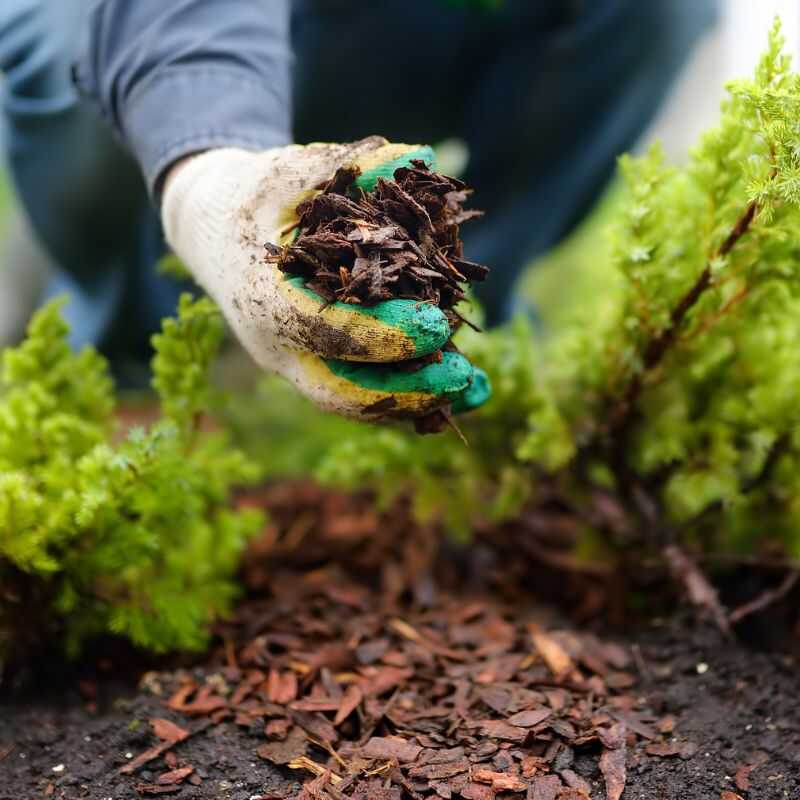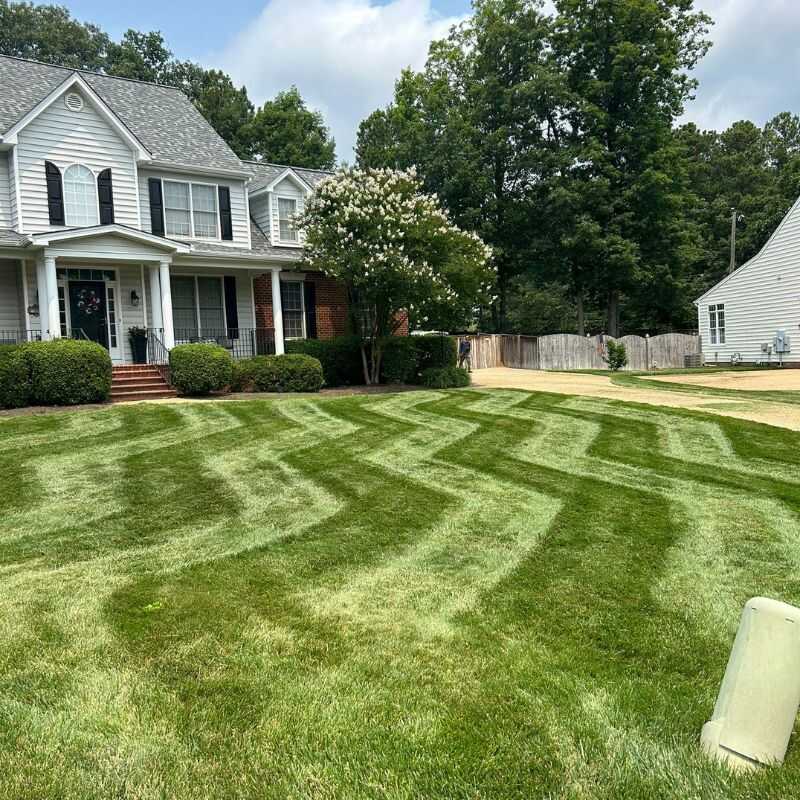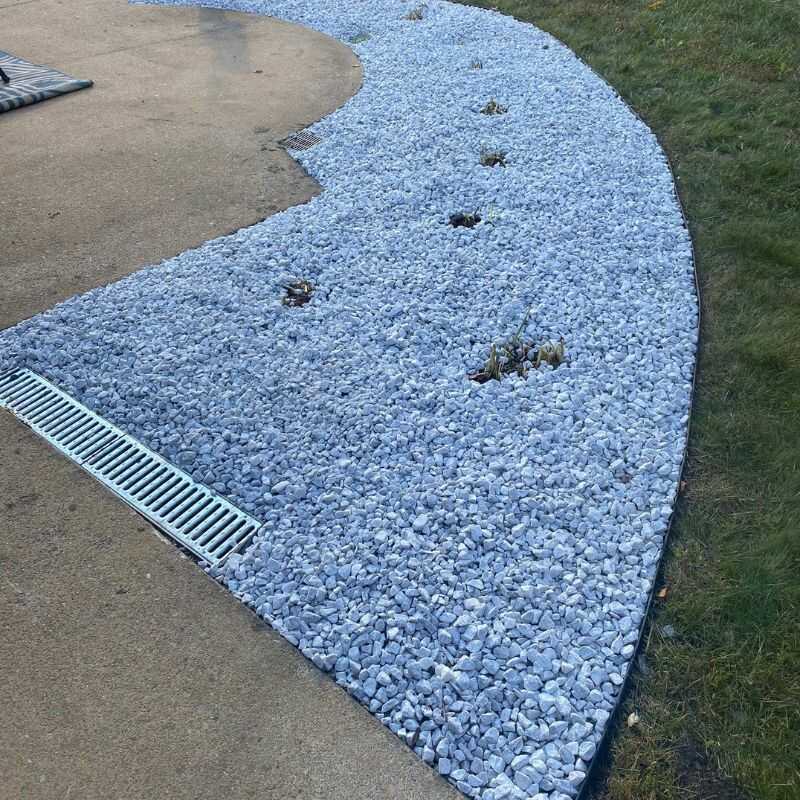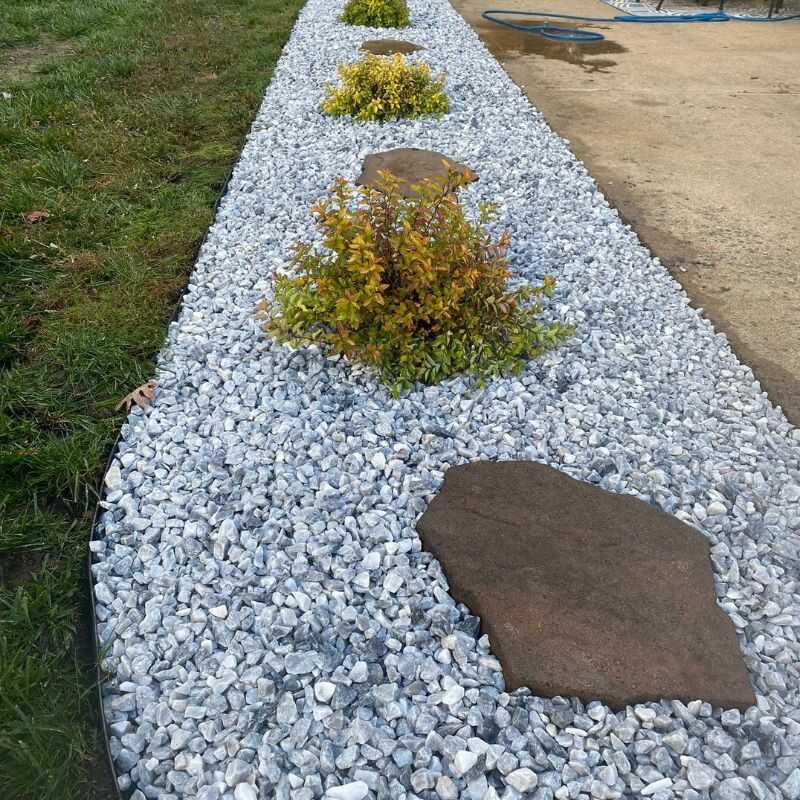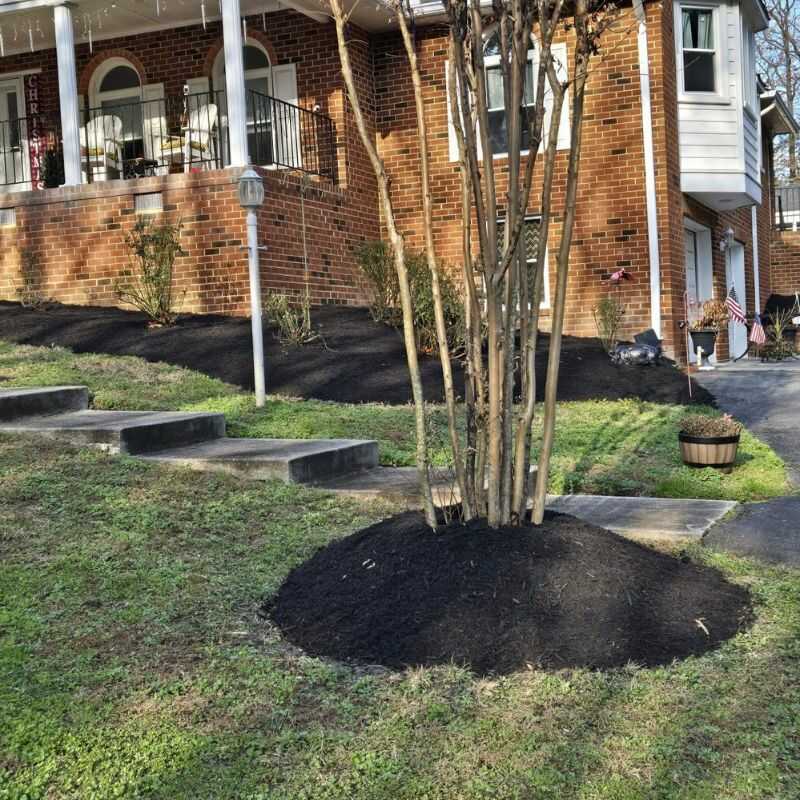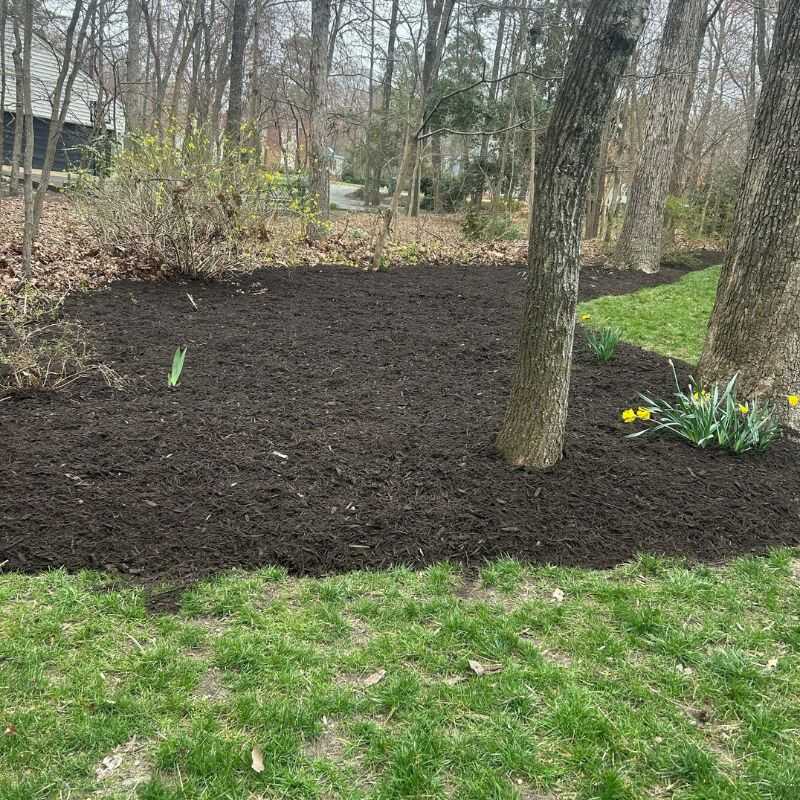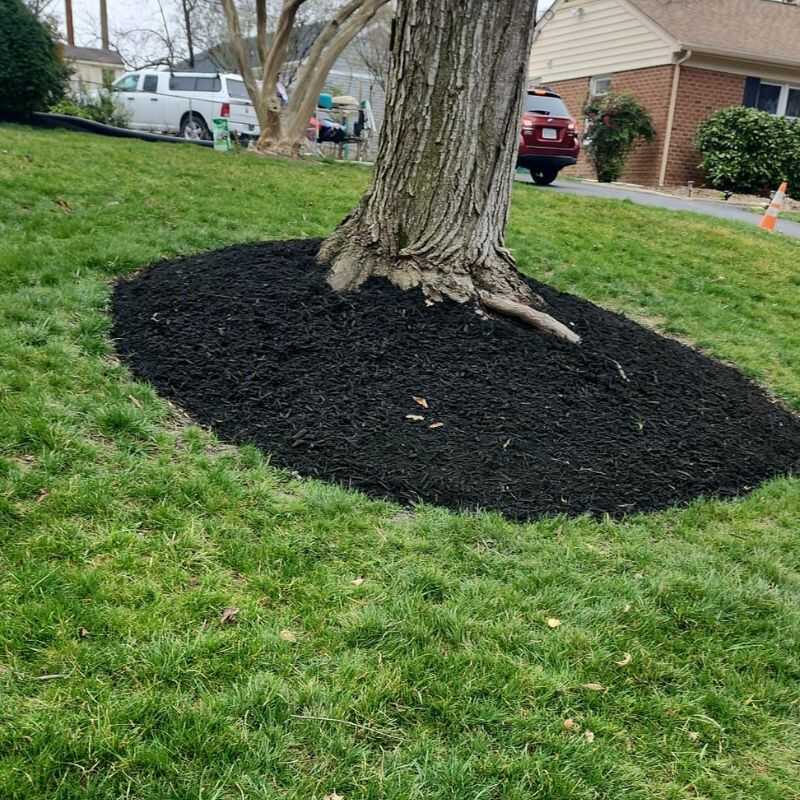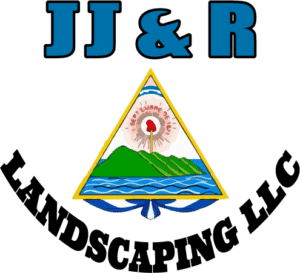Choosing between a DIY approach and professional lawn care depends on both upfront and long-term returns. In Richmond’s unique climate and clay soil conditions, many homeowners try DIY thinking it’s cheaper. Yet, without proper execution, results often fall short. Conversely, professionally applied aeration, overseeding, and fertilizing deliver consistent, long-lasting benefits. Below, we analyze real-world scenarios—covering time, costs, quality, risk, and sustainability—to prove why investing in expertise pays off.
Best Lawn Trio: Aeration, Seeding & Fertilizing Richmond VA
Why Aeration, Seeding, and Fertilizing Are a Game-Changer in Richmond, VA Lawns
Applying aeration, seeding, and fertilizing together isn’t just convenient—it’s essential. Richmond’s clay-rich soil, scorching summers, and periodic heavy rainfall require a comprehensive strategy that targets every level of turf health. By combining these services, you create deep roots, dense grass, and enhanced nutrient absorption. Below, each step is broken down to explain its local impact and how they build on one another.
Core Aeration: Fixing Soil Compaction and Boosting Root Depth
Aeration is the foundation. It removes soil plugs and thatch to:
Create air and water channels in compacted soil
Improve drainage and reduce runoff
Support deeper root growth and healthier turf
Encourage beneficial microbes to flourish
🔗 USDA NRCS: Soil Health Resources
By following USDA NRCS guidelines, Richmond lawns gain improved structure, better disease resistance, and enhanced resilience—all starting from the ground up.
Overseeding: Establishing Dense Turf Through Targeted Regeneration
Right after aeration, overseeding brings new life to thinning spots. This step:
Ensures seed-to-soil contact for higher germination
Introduces resilient grass varieties suited to local conditions
Fills gaps and crowds out weeds
Strengthens turf against heat, pests, and diseases
🔗 Virginia Cooperative Extension: Lawn Establishment and Renovation
Fall overseeding, especially with cool-season blends, sets the stage for healthier, thicker lawns while aligning with nature’s growth cycles.
Precision Fertilizing: Nourishing Every Blade and Root
Once grasses begin to sprout (usually within two weeks), fertilizing provides essential nutrients. Benefits include:
Supplying nitrogen for lush growth
Supporting root systems with phosphorus
Providing iron and magnesium for color and metabolic health
Preventing nutrient depletion and stress under heat
🔗 Virginia Cooperative Extension: Smart Lawn Management Tips
This precision feeding ensures both new seedlings and existing turf thrive together, creating uniform color and strong resilience.
Synergy in Action: The Multiply Effect of Combined Services
When performed sequentially, these services deliver far more than individually. Their synergy:
| Service | Alone | Together |
|---|---|---|
| Aeration | Loosens soil | Enables seed and nutrients to penetrate deeply |
| Overseeding | Adds turf and fills in patches | Takes advantage of aerated seedbeds |
| Fertilizing | Feeds grass | Powers both new and established growth |
This integrated pipeline builds thicker, deeper lawns with better aesthetics and fewer maintenance needs.
Tailored to Richmond’s Climate: A Smart Seasonal Strategy
Finally, this combination aligns seamlessly with Richmond’s environmental cycles:
Spring aeration prevents runoff and enhances early growth
Fall seeding builds roots before winter dormancy
Seasonal fertilization delivers nutrients when grass needs them most
🔗 USDA NRCS Soil Best Practices for Residential Lawns
This proactive approach enhances drought tolerance, suppresses weeds, and maintains turf even during heat waves or heavy rains—without constant input.
Optimal Seasonal Timing for Aeration, Seeding & Fertilizing in Richmond, VA
To fully benefit from aeration, seeding, and fertilizing, it’s crucial to apply them at the right times in Richmond’s climate cycle. Proper timing maximizes soil absorption, seed germination, and nutrient uptake. Below, we break this seasonal strategy into five key phases—spring, early summer, late summer, fall, and winter prep—all enhanced with expert-recommended scheduling and resources.
Spring: Begin With Aeration to Prepare the Soil
In early spring, Richmond lawns are often compacted from winter moisture and foot traffic. Starting with core aeration at this time brings several advantages:
It relieves winter compaction and opens the soil for better drainage.
It primes the ground for subsequent seeding and fertilizing.
It aligns with the growing season, encouraging immediate recovery.
Guidelines from the Virginia Cooperative Extension recommend aeration between March and April once the ground begins to warm but before heavy spring rains arrive for optimal absorption and minimal runoff.
🔗 Virginia Cooperative Extension: Lawn Care Timeline
Furthermore, the National Turfgrass Evaluation Program (NTEP) confirms that spring aeration improves long-term turf density.
Early Summer: Begin Overseeding Before Stress Sets In
After aeration, begin overseeding in late spring to early summer. While fall remains ideal, a well-executed Spring overseeding program is effective because:
Soil is warm enough for seed germination.
Cooler nights allow seedlings to establish before heat stress.
It helps fill spring-thinned areas earlier than fall treatments.
According to data from the NPSU Turf Science, seeding during May-June can result in successful turf establishment when preceded by aeration.
🔗 NPSU Turf Science: Seeding Best Practices
Moreover, early-season seeding allows selective variety introduction to enhance resistance against regional heat, shade, or disease pressure.
Mid-Summer: Focus on Hydration, Not Heavy Treatment
In June and July, Richmond experiences hot, humid weather. During this period:
Skip core aeration to avoid further stress on recovering turf.
Hold off on seeding, since elevated heat and intense sun reduce seedling success.
Instead, water deeply in the morning and maintain fertility of established grass.
Additionally, using a slow-release summer fertilizer at low rates supports turf resilience—but avoid overapplication, which can cause burn.
🔗 Virginia Cooperative Extension: Summer Lawn Care
This approach maintains health without overstressing freshly seeded or aerated lawns.
Early Fall: The Prime Time for Full Package Application
Early fall remains the gold standard in Richmond. During September and October:
Temperatures cool but soil retains warmth—ideal for germination.
Rainfall frequency increases, aiding seed establishment.
Turf recovery enters a prime growth window before dormancy.
Combining aeration, overseeding, and fertilizing in early fall results in strong root development and minimal disease risk.
🔗 Virginia Cooperative Extension: Fall Overs eeding Guide
Furthermore, significant research by the University of Minnesota shows that fall treatments result in both denser lawns and deeper roots—reducing spring maintenance and irrigation needs long term.
Winter Prep: Light Care to Support Dormant Roots
As temperatures drop and grass enters dormancy, maintenance shifts to maintenance prep:
Avoid aeration or seeding, as cold and frost hinder growth.
Apply a late-season, low-nitrogen fertilizer in November to support root storage.
Remove debris and fallen leaves to prevent mold and mildew.
In fact, the National Turfgrass Federation suggests that this pre-winter nutrition improves spring green-up and stress tolerance.
🔗 National Turfgrass Federation: Winter Lawn Strategy
By preparing properly now, lawns rebound faster and more vibrantly come spring.
Seasonal Strategy Table: When to Apply the Trio
| Season | Aeration | Overseeding | Fertilizing |
|---|---|---|---|
| Spring (Mar–Apr) | ✅ Prime time | ✅ Yes (optional) | ✅ Light application |
| Early Summer | ❌ Skip | ✅ If damage | ✅ Regular support level |
| Mid-Summer | ❌ Skip | ❌ Skip | ✅ Light nourishing only |
| Early Fall | ✅ Ideal | ✅ Recommended | ✅ Full application |
| Winter Prep | ❌ Skip | ❌ Skip | ✅ Low-nitrogen fertilizer |
When Richmond homeowners schedule aeration, overseeding, and fertilizing according to seasonal timing, they maximize germination, minimize lawn stress, and support deeper root systems. This smart rhythm aligns with local conditions—heat, rainfall, and dormancy cycles—producing lush, resilient turf year-round.
How Different Grass Types Respond to aeration, seeding, and fertilizing in Richmond, VA
Understanding how specific grasses respond to the aeration, seeding, and fertilizing combo ensures better outcomes. Richmond properties typically feature cool-season varieties like tall fescue, Kentucky bluegrass, and perennial ryegrass. Some also include warm-season types such as Bermuda or Zoysia. Tailoring this trio to your grass type maximizes root strength, density, and resilience. Each grass reacts differently in terms of growth speed, nutrient requirements, and dormancy schedules.
Tall Fescue: The Resilient Deep-Rooted Favorite
Tall fescue thrives in Richmond thanks to its robust, deep-rooted system. Its natural tolerance to heat and drought makes it ideal for local conditions.
Key traits:
Deep, fibrous roots—up to 12 inches
High shade and foot traffic tolerance
Coarse texture, dark color
When treated with aeration, overseeding, and fertilizing, tall fescue shows impressive improvements:
Roots penetrate deeper into aerated soil
Plug-seeding with resilient cultivars boosts density
Fertilization supports steady growth without burning
This method produces lush, low-maintenance turf that stands up to local climate stress.
🔗 Virginia Tech Turfgrass Research Center
Kentucky Bluegrass: Classic, Dense, and Elegant
Kentucky bluegrass is prized for its carpet-like appearance and smooth texture. Although slower to establish, it rewards patience with exceptional lawn quality.
Key traits:
Dense, fine-textured canopy
Self-repairing via rhizomes
Requires regular fertility
With our trio:
Aeration opens space for rhizome expansion
Overseeding preserves density across patches
Fall fertilization builds phosphorus-rich root reserves
This approach yields a dense, durable lawn that resists soil compaction over time.
🔗 Kentucky Turfgrass Council
Perennial Ryegrass: The Rapid Recovery Specialist
Perennial ryegrass germinates quickly, making it perfect for rapid lawn recovery in Spring or Fall.
Key traits:
Germinates within 5–7 days
Vibrant, fine-textured blades
Less heat tolerant
When combined with aeration and fertilizing:
Aeration ensures fast root establishment
Seed-to-soil contact boosts germination
Nitrogen-rich feeding promotes quick top growth
Ideal for temporary cover when overseeding mixed with fescue.
🔗 National Turfgrass Evaluation Program (NTEP)
Warm-Season Grasses: Bermuda & Zoysia Adapted for Richmond
Some Richmond yards feature warm-season grasses such as Bermuda or Zoysia, especially in full-sun zones.
Key traits:
Thrives in heat and sunlight
Enters dormancy in winter
Requires vigorous root systems
Treatment effects:
Aeration encourages deep crown growth
Strategic seeding helps maintain color in shaded areas
Phosphorus-rich fertilization promotes winter root storage
This method supports durability and appearance in high-use landscapes.
🔗 NTEP Warm-Season Turf Research
Multi-Species Grass Blends: Best of All Worlds
Blending cool- and warm-season grasses offers an all-weather solution, combining resilience, color, and coverage.
Key traits:
Maintains green color longer year-round
Adapts to shade and drought variably
Balances growth via interactive root systems
With aeration, seeding, and fertilizing:
Mixes leverage aerated soil for germination
Overseeding fortifies weaker varieties
Fertilization balances needs across species
This combo maximizes adaptability and aesthetics for complex landscapes.
🔗 Virginia Cooperative Extension Texture Blends
Summary Table: Grass Types & Response to Trio
| Grass Type | Aeration Benefit | Overseeding Effect | Fertilizing Impact |
|---|---|---|---|
| Tall Fescue | Strong deep root access | High germination & root build | Sustained growth, drought-proof |
| Kentucky Bluegrass | Rhizome support & soil penetration | Improved patch coverage | Dense growth with phosphorus |
| Perennial Ryegrass | Fast establishment channels | Rapid coverage in gaps | Quick color and recovery |
| Warm-Season (Bermuda/Zoysia) | Enhances crown expansion | Winter green-up in shaded spots | Promotes root storage |
| Grass Blends (Cool/Warm) | Works well across species | Balanced density | Nutrient harmony across mix |
Top Lawn Problems Solved by the Aeration, Seeding, and Fertilizing Trio
For many homeowners, persistent lawn issues can be frustrating, time-consuming, and expensive to fix. However, when you apply the comprehensive aeration, seeding, and fertilizing package, you tackle the root causes rather than just treating symptoms. Richmond lawns commonly face compaction, patchiness, thatch buildup, weed invasion, and drought stress. Each of these problems is effectively addressed by this powerful trio when applied correctly.
Soil Compaction & Poor Drainage
Compacted clay soil is a silent killer of Richmond lawns. It prevents proper oxygen flow, traps water on the surface, and blocks nutrient absorption.
Core aeration breaks soil plugs to restore permeability
Seeds access loosened soil pockets more easily
Fertilizers penetrate to roots rather than washing away
When used together, these services rebuild soil structure, improve water movement, and enhance turf health from the ground up.
🔗 USDA NRCS: Soil Health Resources
By alleviating compaction, your lawn becomes more resilient to traffic, rain, and neglect—giving you peace of mind and reducing long-term costs.
Thin or Bare Patches
Sparse turf can be caused by disease, wear, shade, or poor soil. Without proper intervention, these patches widen, invite weeds, and compromise curb appeal.
Overseeding introduces targeted grass blends to fill holes
Aerated soil ensures seedling roots establish quickly
Precise fertilization delivers nutrients exactly where needed
This strategic approach not only improves color and density, but also removes the need for synthetic solutions or expensive sod.
🔗 Virginia Cooperative Extension: Lawn Repair Techniques
The result: a uniform, vibrant lawn that boosts property value and homeowner pride.
Thatch Accumulation & Disease Susceptibility
Thatch, a layer of dead grass and roots, chokes your lawn. It prevents water and nutrients from reaching the soil. It also harbors pests and fungal pathogens.
Aeration lifts compacted thatch layers for better drainage
Overseeded roots penetrate previously blocked areas
Fertilizer supports microbial breakdown of organic matter
These services work together to thin thatch and boost turf health. As a result, you can enjoy a weed-free, fungus-resistant lawn.
🔗 Penn State Extension: Managing Thatch Problems
This natural decomposition reduces disease risks without the need for harsh chemicals.
Weed Invasion & Pest Intrusion
Weeds take advantage of bare or thin spots, and pests thrive in stressed lawns. Fighting them with herbicide alone never addresses the underlying issues.
Dense grass from overseeding crowds out weeds
Aeration and fertilizer boost turf vigor and defense
Healthy root zones resist grub, chinch bugs, and other pests
Ultimately, this trio enhances turf density and root health to suppress invaders naturally.
🔗 University of Maryland Extension: Integrated Pest Management
As your lawn thickens, weed pressure drops, and pest damage becomes unlikely—eliminating recurring treatment costs.
Drought Stress & Heat Vulnerability
Extended summer heat and water restrictions can turn lawns brown and patchy. Shallow-rooted turf lacks the resilience to survive hot, dry weeks.
Aeration enables deeper root growth for water access
Overseeded grasses develop stronger root systems
Fertilizer builds turf strength before seasonal stress
Research from the University of California Agriculture & Natural Resources highlights that deeper roots dramatically improve drought survival.
🔗 UC ANR: Drought-Tolerant Turf Practices
Sustained water efficiency means fewer irrigation cycles and lower water bills.
Summary Table: Lawn Problems vs. Trio Solutions
| Lawn Problem | Core Aeration Benefit | Overseeding Benefit | Fertilizing Benefit |
|---|---|---|---|
| Soil Compaction & Drainage | Improves soil permeability | Not applicable | Ensures nutrient delivery |
| Thin or Bare Spots | Opens seedbed | Fills in gaps | Supports seedling growth |
| Thatch Build-up & Disease Risk | Reduces thatch depth | Enhances thatch decomposition | Boosts microbial activity |
| Weed & Pest Pressure | Supports turf health | Crowds out weeds | Strengthens pest resistance |
| Drought & Heat Stress | Promotes deeper rooting | Builds root systems | Boosts heat tolerance |
By combining aeration, seeding, and fertilizing, your lawn doesn’t just get better—it becomes fundamentally stronger. This trio addresses the most common and damaging turf problems in Richmond. It provides a scientifically backed, long-term solution that saves time, money, and effort down the line. Are you ready to schedule a service that delivers lasting results?
Common Mistakes to Avoid When Combining Aeration, Seeding, and Fertilizing
Even with a proven lawn revitalization “trio,” homeowners can make costly mistakes that diminish results. Avoiding these missteps ensures you maximize the benefits—deeper roots, healthier turf, reduced maintenance, and greater curb appeal. Below are five frequent errors and how our professional application prevents them.
Skipping Soil Testing Before Treatment
Failing to test your soil leads to improper nutrient balance and pH adjustments.
Using fertilizers without testing can harm your turf or waste money
Unbalanced N-P-K ratios may burn seedlings or prevent root growth
Ignoring soil pH can limit nutrient uptake and turf color
Our team conducts pre-treatment soil analysis to determine your lawn’s exact needs. We then customize fertilizer blends accordingly.
🔗 USDA NRCS: Conducting a Soil Test
This approach ensures no guesswork—just science-backed, balanced application.
Aerating at the Wrong Time
Timing is everything. Aerating during extreme stress periods compromises recovery.
Core aeration in high heat or drought worsens stress
Aeration when soil is too wet or frozen damages turf
Doing it too early or too late reduces effectiveness
With precise seasonal scheduling—from spring to fall—we ensure aeration aligns with optimal soil conditions.
🔗 Virginia Cooperative Extension: When to Aerate
This timing accuracy maximizes soil penetration and turf resilience.
Over- or Under-Seeding After Aeration
Applying too much seed drains nutrients; too little seed leads to patchy gaps.
Over-seeding increases fungal risks and utters greedy weeds
Under-seeding fails to fill compacted gaps
Poor seed variety selection reduces drought tolerance
Our seed technicians calculate seeding rates based on lawn size and grass type. We choose blends suited to Richmond’s conditions for optimal germination and longevity.
🔗 National Turfgrass Evaluation Program: Seeding Rates
Smart seeding means stronger, fuller lawns without waste or weak spots.
Improper Fertilizer Application
Incorrect application can damage your lawn or pollute ground water.
Using high-nitrogen blends too early causes shoot-lush but root-weak turf
Applying fertilizer before rainfall washes nutrients away
Skipping slow-release blends causes nutrient spikes
We apply only slow-release, balanced formulas after seeding and aeration. Application follows rainfall forecasts for maximum uptake.
🔗 EPA: Best Practices for Fertilizer
This method protects both turf and the environment while boosting results.
Ignoring Post-Service Maintenance
Even the best treatments fail without follow-up care.
Failing to water newly seeded areas impedes germination
Mowing too soon removes tender blades
Skipping regular inspections risks unnoticed damage
We include a full aftercare plan:
Watering schedules based on soil and weather
Mowing guidelines for optimal blade height
Seasonal inspections to catch stress early
This full-service process ensures your lawn sustains long-term strength and curb appeal.
Summary Table: Mistakes vs. Pro Trio Practice
| Common Mistake | Negative Effect | Our Pro Solution |
|---|---|---|
| Skipping soil tests | Unbalanced nutrition, poor turf health | Custom soil testing, pH/nutrient adjustment |
| Aerating at wrong time | Turf stress, poor penetration | Seasonal timing based on best practices |
| Over-/Under-seeding | Patchy turf or disease risk | Precise seeding rates and variety blends |
| Improper fertilizer use | Turf burning, pollution | Balanced slow-release formulas |
| Neglecting post-care | Germination failure, patchy growth | Full care plan with watering/mowing |
Avoiding common mistakes is just as important as choosing the right lawn rejuvenation method. With managed timing, precise application, and ongoing care, this pro-level package delivers lush, durable results while saving you money—and your lawn—from costly remediation. You can book now with confidence, knowing your lawn will thrive.
Why Professional Aeration, Seeding, and Fertilizing Outperform DIY Methods
When homeowners attempt DIY lawn care—especially aeration, overseeding, and fertilizing—the results often fall short. In Richmond’s demanding climate and unique clay-rich soils, even small errors can lead to patchy grass, disease, or waste. Professionals deliver expertise, precision, and holistic care that far exceed what owners can achieve alone. Below, discover five reasons why choosing expertly administered treatment delivers superior outcomes—and greater value.
Accurate Soil Assessment & Customized Treatment Plans
DIY kits and guides assume average soils. But Richmond lawns often have variable clay content, pH levels, and nutrient deficiencies.
Professionals conduct soil testing to measure pH, N-P-K levels, and organic matter
They tailor fertilizer mixes and seeding blends to specific soil needs
Treatment timing is customized based on soil moisture, temperature, and recent weather
Our soil analysis ensures balanced nutrition delivery free from guesswork.
🔗 USDA NRCS: Soil Testing & Recommendations
With precise data, we avoid under- or over-treatment—maximizing lawn health and minimizing costs.
Professional-Grade Equipment for Effective Aeration & Distribution
Home aerators and spreaders often fail on dense clay or uneven terrain.
Commercial-grade core aerators remove deeper plugs—up to 3”—for optimal soil tillage
Broadcast seeders drop seed evenly at exact rates on large lawns
Professional spreaders apply fertilizer uniformly without clumping
This is not achievable with hand tools or rental machines.
🔗 Penn State Extension: Benefits of Core vs. Spike Aeration
Proper equipment yields better aeration depth, seed germination, and nutrient contact—improving overall lawn density and health.
Timing & Seasonal Precision That DIY Lacks
Mistimed interventions often undermine lawn performance and increase costs.
Professionals schedule aeration in early spring or early fall—when soil conditions are ideal
Overseeding is timed for best germination before heat or frost
Fertilization is coordinated with rainfall and aeration to reduce nutrient runoff
Following Virginia Cooperative Extension recommendations ensures timing aligns with natural growth cycles.
🔗 Virginia Cooperative Extension: Lawn Care Calendar
With expert scheduling, treatments consistently translate into robust, resilient turf—without wasted effort or turf damage.
Integrated Pest, Weed, and Thatch Management
DIY packages address only one issue at a time—often ignoring the root cause.
Aeration mitigates thatch and improves organic decomposition
Overseeding fills weed-vulnerable gaps
Fertilization fortifies turf to resist pests and fungi
This integrated approach eliminates root problems rather than masking them.
🔗 Penn State Extension: Integrated Turf Pest Management
As a result, lawns become naturally healthier, lowering chemical usage and increasing time savings.
Ongoing Monitoring & Expert Adjustments
The process doesn’t end after treatment—professional care includes follow-up.
Lawn health is monitored to assess germination, density, and nutrient uptake
Adjustments are made for upcoming weather, new pest threats, or stress
Seasonal care plans are recommended to extend value and curb failure risk
Our service includes scheduled check-ins—so results continue improving long after application day.
Summary Table: DIY vs. Professional Application
| Factor | DIY Limitations | Professional Advantages |
|---|---|---|
| Soil Analysis | Generic treatments, unknown deficiencies | Data-driven, customized solutions |
| Equipment Quality | Shallow aeration, uneven spread | Deep core aeration, precision application tools |
| Timing Precision | Mistimed to off-season inefficiencies | Season-aligned execution for best results |
| Integrated Problem-Solving | Symptom treatment | Holistic management of soil, weeds, pests, and thatch |
| Ongoing Monitoring & Care | One-time effort, no adjustments | Regular follow-up ensures sustained lawn health |
When DIY Fails — Signs You Need an Expert for Lawn Revival
Even the best-intentioned homeowners can stumble when attempting DIY aeration, seeding, and fertilizing—leading to patchy results, hidden damage, or unnecessary expenses. Recognizing when it’s time to call in professionals, rather than continuing costly or ineffective efforts, can save your lawn—and your budget—in the long run. Below are common symptoms of suboptimal DIY turf care and why professional intervention is your key to lasting success.
Uneven or Incomplete Aeration Results
When aeration is performed at home, many issues surface:
Patches remain un-aerated or shallow
Soil plugs are left on the surface
Key high-traffic areas are ignored
These problems hinder water absorption and seed germination. Pro-level aerators remove deep cores and cover the entire lawn thoroughly, unlike many consumer units.
🔗 Penn State Extension: Spotting Aeration Issues
Without expert intervention, uneven aeration limits the effectiveness of your entire lawn renewal plan.
Poor Seed Germination & Patchy Growth
If overseeding doesn’t deliver thick turf, DIY tactics may have misfired:
Seed scattered unevenly
Improper seeding rates—too light or too heavy
Seed without soil contact—left on the surface
Professional overseeding ensures precise placement, consistent seed density, and ideal soil conditions. These elements avoid thinning and weed-prone areas.
🔗 Virginia Extension: Effective Overseeding Tips
Germination may take weeks—but when done properly, results are dense, green, and uniform.
Burned Grass from Incorrect Fertilizer Use
DIY fertilizer mistakes can turn grassy dreams into scorched patches:
Fertilizer applied without aeration gets washed away
High-nitrogen blends scorch tender shoots
Applying before rain causes nutrient runoff and pollution
Professionals use slow-release blends timed to avoid burn risks while maximizing nutrient absorption.
🔗 Environmental Protection Agency: Safe Fertilizing Practices
Proper fertilization strengthens instead of damages turf—making DIY neglect worse than no treatment.
Recurring Weeds, Thatch, or Pest Infestation
If weeds reappear fast, thatch remains, or pests persist, DIY is often limited:
Gaps in turf invite weeds back
Thatch isn’t fully broken down
Pest damage continues to spread
Professionals apply a full-service plan:
Aeration to thin thatch
Overseeding for coverage
Fertilizing to boost pest-resistant growth
This integrated strategy tackles the root causes—not symptoms.
🔗 Penn State Integrated Pest Management for Lawns
Persistent Drought Stress or Compaction Issues
If your lawn turns brittle or yellow during heat waves or rain stands on the surface, your methods aren’t working:
Compaction remains in high-traffic zones
Root systems are still shallow
Water pools, nutrient flow is blocked
Professionals diagnose and treat soil and root issues. They’re trained to rebuild lawns that survive harsh conditions.
🔗 USDA NRCS: Understanding Soil Compaction
Summary Table: DIY Failures vs. Expert Intervention
| Problem | DIY Symptoms | Expert Fix Approach |
|---|---|---|
| Shallow/incomplete aeration | Missed zones, poor soil plugs | Full-coverage core aeration with equipment |
| Spotty overseeding | Thin patches, weeds | Precision seeding at optimal rates |
| Turf burn from fertilizer | Yellowing/scorching grass | Slow-release blends, timed applications |
| Weeds/Pests/thatch | Recurring issues, mulch build-up | Integrated treatment and monitoring |
| Compaction/drought | Pooling water, brittle grass | Soil diagnostics, targeted compaction relief |
Professional vs. DIY: Cost Comparison & Long-Term Value of Aeration, Seeding, and Fertilizing
Direct Costs: Tools, Materials, and Labor
DIY may seem cost-effective, but costs add up fast:
Renting core aerators can exceed $150/day
High-quality seed and balanced fertilizers add another $200–$300
Your time: several hours to a full weekend, plus learning curve
In contrast, professionals offer:
Local, bundled service rates
Professional-grade equipment included
Labor, scheduling, and cleanup managed for you
This eliminates guesswork and doubles as an affordable alternative to repeated DIY attempts.
🔗 USDA NRCS: Cost-Benefit of Professional Soil Practices
By bundling, homeowners receive better value and consistent results.
Hidden Risks and Potential Mistakes
DIY doesn’t account for climate-specific complications:
Mis-timed aeration or seeding leads to drought stress or failure
Incorrect fertilizer blends cause burn or runoff
Poorly placed seed leaves bare spots inviting weeds
Professionals avoid these pitfalls through:
Timing aligned with Virginia weather patterns
Precision application using custom blends
Soil diagnostics to reduce error risk
The value of reliability and peace of mind cannot be overstated.
🔗 EPA: Preventing Nutrient Runoff from Turf
Longevity and Return on Investment
DIY results rarely last. Yet, professionals:
Achieve thicker turf in fewer seasons
Reduce need for weed or insect control
Lower future irrigation and maintenance by up to 30%
Research confirms that healthier lawns increase property value and homeowner satisfaction.
🔗 American Society of Landscape Architects: Residential Property Value Study
The trio approach yields compounding benefits—boosting lawn health revenue, curb appeal, and budget.
Warranty, Guarantees, and Follow-Up Service
DIY lacks accountability:
There’s no guarantee on aeration depth or seed germination
No one monitors progress, schedules follow-up
No recourse if treatment fails under stress
Professionals offer:
Clear service guarantees
Post-treatment checks and recommendations
Communication and support from seasoned experts
This accountability ensures results and long-term success for your yard.
Digital Tools and Precision Analytics
Professional services employ technology DIY projects can’t match:
Soil moisture sensors and pH monitoring ensure precision
GPS-guided spreaders deliver uniform application
Data tracking warns of turf stress or pest emergence
Modern turf management uses these tools to reap tangible benefits.
Summary Table: DIY vs. Professional ROI
| Feature | DIY Approach | Professional Service |
|---|---|---|
| Upfront Cost | Tools, seed, fertilizer, time | Bundled labor and equipment |
| Risk of Mistakes | High (weather, application errors) | Mitigated through training and diagnostics |
| Longevity of Results | Short-term improvement | Sustained health and density |
| Accountability | None | Guarantees and follow-up |
| Technology & Monitoring | Basic to none | Precision tools and data-driven insights |
Frequently Asked Questions About Aeration, Seeding, and Fertilizing in Richmond, VA
When Will I See Results After Treatment?
Grass seed typically germinates in 7–21 days, depending on soil and water. Initial green appears within 4–6 weeks as roots establish. By 3–4 months, you'll see full density and color.
Expectations are clear, but following post-treatment guidelines ensures success.
🔗 Virginia Cooperative Extension: Lawn Establishment Timeline
While early signs are encouraging, sustained care brings full results—so make sure to schedule follow-ups and book now to maintain momentum.
Expectations are clear, but following post-treatment guidelines ensures success.
🔗 Virginia Cooperative Extension: Lawn Establishment Timeline
While early signs are encouraging, sustained care brings full results—so make sure to schedule follow-ups and book now to maintain momentum.
Can I Perform This Trio in One Visit?
Yes—but only when conditions align perfectly:
• Soil should be dry enough for aeration but moist enough for seed
• Weather must be favorable—no heavy rain or drought expected
• Grass type and seasonal timing (spring or fall) must synchronize
Professionals coordinate all three steps in a single, efficient appointment when conditions are optimal.
🔗 USDA NRCS: Timing for Turf Renovation
Ready for seamless lawn renewal? Get a quote today to get your treatment scheduled during the next ideal window.
• Soil should be dry enough for aeration but moist enough for seed
• Weather must be favorable—no heavy rain or drought expected
• Grass type and seasonal timing (spring or fall) must synchronize
Professionals coordinate all three steps in a single, efficient appointment when conditions are optimal.
🔗 USDA NRCS: Timing for Turf Renovation
Ready for seamless lawn renewal? Get a quote today to get your treatment scheduled during the next ideal window.
Will It Help If My Lawn Has Been Neglected for Several Years?
Definitely. Overgrown, neglected lawns require more care—but our approach adapts.
• Aeration penetrates decades of compaction
• Overseeding introduces fresh, resilient varieties
• Fertilizing rebuilds nutrient-deficient soil
With thorough diagnostics, even problem yards can return to health within one season.
🔗 Penn State Extension: Restoring Neglected Lawns
If neglect has taken hold, don’t wait. Schedule service today to restore turf integrity and curb appeal.
• Aeration penetrates decades of compaction
• Overseeding introduces fresh, resilient varieties
• Fertilizing rebuilds nutrient-deficient soil
With thorough diagnostics, even problem yards can return to health within one season.
🔗 Penn State Extension: Restoring Neglected Lawns
If neglect has taken hold, don’t wait. Schedule service today to restore turf integrity and curb appeal.
Is This Safe for Children and Pets?
Safety is our top concern—especially when families are involved:
• We use EPA-registered, slow-release fertilizers to prevent runoff
• Aeration and seeding pose no chemical risks
• We recommend safe re-entry times (e.g., no foot traffic for 24 hours)
It's both pet- and kid-friendly once initial drying has occurred.
🔗 EPA Fertilizer Safety Guidelines
Enjoy a revitalized lawn without compromising safety. Hire us now and gain peace of mind.
• We use EPA-registered, slow-release fertilizers to prevent runoff
• Aeration and seeding pose no chemical risks
• We recommend safe re-entry times (e.g., no foot traffic for 24 hours)
It's both pet- and kid-friendly once initial drying has occurred.
🔗 EPA Fertilizer Safety Guidelines
Enjoy a revitalized lawn without compromising safety. Hire us now and gain peace of mind.
How Does This Help Against Common Richmond Lawn Issues?
In Richmond, lawns face unique threats—heat, humidity, disease, and compaction.
• Aeration prevents soil buildup and helps drainage
• Overseeding improves turf density, reducing weeds
• Fertilizing ensures robust growth to resist stress factors
Together, they form a defensive barrier to local lawn stresses.
🔗 Virginia Cooperative Extension: Local Lawn Care Guide
Secure long-term protection—book now and fortify your lawn with proven science.
• Aeration prevents soil buildup and helps drainage
• Overseeding improves turf density, reducing weeds
• Fertilizing ensures robust growth to resist stress factors
Together, they form a defensive barrier to local lawn stresses.
🔗 Virginia Cooperative Extension: Local Lawn Care Guide
Secure long-term protection—book now and fortify your lawn with proven science.
Why Choose JJR Landscaping for Aeration, Seeding & Fertilizing in Richmond, VA
When you book aeration, seeding, and fertilizing with JJR Landscaping, you’re choosing more than a service—you’re investing in professional excellence. With 20 years of experience, advanced equipment, and deep industry knowledge, we deliver unmatched value and results. Below are the six key reasons why JJR Landscaping stands above DIY attempts and competitors alike.
✅ Two Decades of Local Expertise & Proven Track Record
With 20 years of experience in Richmond, we’ve handled everything from clay-heavy yards to shaded lawns. Our proven track record and local knowledge ensure predictable, professional outcomes every time.
✅ Customized Lawn Plans & Soil Analysis
We conduct thorough soil testing and build a unique lawn care strategy based on your yard's needs—from pH levels to fertilizer timing. That means fewer wasted materials and faster, healthier results.
✅ Commercial-Grade Equipment & Advanced Techniques
We use industrial-grade aerators, precision spreaders, and advanced fertilizer applicators—tools that outperform rentals and ensure deep penetration, even coverage, and reliable results every time.
✅ Integrated Problem-Solving & Seasonal Timing
We time treatments to match Richmond’s seasons and tailor our service to fight common issues like thatch, pests, drought, and weeds. Our strategy adapts to your lawn’s needs through every season.
✅ Safety, Peace of Mind & Eco-Conscious Practices
Your family’s safety is our top priority. We use EPA-approved fertilizers, follow strict re-entry guidelines, and prevent nutrient runoff to protect your home and the environment.
✅ Guaranteed Results & Customer Support
Our commitment doesn’t end after service. We follow up, provide performance guarantees, and support your lawn’s growth with ongoing care plans and expert tips—so your investment lasts.
What Richmond Homeowners Are Saying About Our Lawn Revival Trio
Trusted across Richmond, Glen Allen, Short Pump, Bon Air, and beyond—our Aeration, Seeding, and Fertilizing service is changing lawns and lives.
"JJR Landscaping completely revitalized my patchy yard. After the aeration, seeding, and fertilizing, the grass came back thicker and greener than ever. The team was professional and efficient. Highly recommend!"
— Diane T., Glen Allen, VA
★★★★★
"I’ve tried DIY solutions and other companies before, but nothing worked like this. The trio service brought my backyard back to life after years of neglect."
— Marcos A., Short Pump, VA
★★★★★
"I needed fast results before a backyard event. JJR’s team delivered with their 3-in-1 lawn service. My lawn looked stunning within two weeks!"
— Carla W., Bon Air, VA
★★★★★
"From the first quote to the follow-up after the job, their team was transparent, timely, and professional. I’m now a regular customer."
— Leon H., Chester, VA
★★★★★
"I was hesitant about investing in lawn services, but JJR proved it’s worth every penny. The results were immediate and long-lasting."
— Renee S., Richmond, VA
★★★★★
Invest Smart, Save More
You’ve seen the transformations. Call JJR Landscaping LLC
📞 Call Today: 804-252-7468
📍 Visit Us: 8702 Lawndell Rd, Richmond, VA 23229
🌐 Online: jjrlandscapingllc.com
We’re ready to secure your property, protect your family, and restore your peace of mind — one tree at a time. Schedule your free consultation, and we’ll bring your outdoor vision to life.
Located at 8702 Lawndell Rd, Richmond, VA 23229
Over 18 years of trust and top-rated customer service
